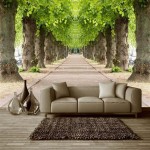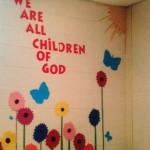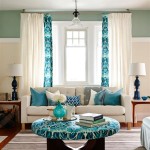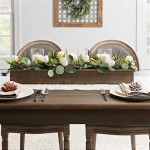Decorative Room Organization Ideas in Offices
In the contemporary workplace, a well-organized office environment is not just about efficiency and productivity, but also a reflection of professionalism and aesthetic appeal. A clutter-free workspace fosters a sense of calm and focus, while decorative elements contribute to a stimulating and inspiring atmosphere. This article explores decorative room organization ideas that can transform a typical office into a functional and visually appealing space.
1. Harnessing the Power of Color
Colors play a significant role in shaping the ambiance of a room, influencing mood, focus, and creativity. A well-thought-out color scheme can enhance the organization and visual appeal of an office. Lighter shades, like pale blues and greens, are often associated with clarity and focus, making them suitable for areas dedicated to work or tasks requiring concentration. Conversely, brighter hues, such as vibrant yellows and oranges, can stimulate energy and creativity, creating a lively atmosphere conducive to brainstorming or collaborative projects.
Implementing color strategically can also contribute to room organization. For example, using a bold color for shelves or storage units can visually define areas and make them easier to identify. Color can also be used to create a visual hierarchy, with essential items highlighted in contrasting colors for easy access.
2. Embracing the Beauty of Functionality
Office organization is about maximizing functionality without sacrificing aesthetics. Integrating decorative elements that serve a practical purpose is a cornerstone of this approach. For instance, a stylish bookcase can double as a room divider, creating separate zones for focused work and collaborative activities.
Similarly, decorative baskets can be used to store stationery, cables, or other office essentials, adding a touch of elegance while keeping clutter at bay. Open shelving with decorative accents can display prized possessions, books, or office supplies, transforming them into visual focal points. These decorative elements not only enhance the aesthetic appeal of the office but also contribute to an organized and functional environment.
3. The Art of Minimalism and Personalization
Minimalism is a popular design trend that emphasizes simplicity and functionality, promoting a sense of calm and focus. In an office, minimalism can be achieved through strategic decluttering, keeping only essential items visible and storing others in discreet containers.
Personalization is another important aspect of creating a visually appealing and functional office. Incorporating personal touches, such as framed photographs, artwork, or travel souvenirs, can make the space feel more welcoming and reflect the individual's personality. However, it's crucial to maintain a balance between personalization and clutter, ensuring that personal items complement the overall aesthetic without overwhelming the space.
4. The Versatility of Plants
Plants have an undeniable ability to enhance the aesthetics of a room, bringing a sense of life and freshness. Strategic placement of plants can also contribute to room organization. They can act as natural dividers, separating work areas without creating physical barriers.
Furthermore, plants have been shown to improve air quality and reduce stress, contributing to a more productive and enjoyable work environment. Plants are also low-maintenance decorative elements, requiring minimal effort to maintain their beauty and contribute to the overall ambiance of the office.
5. Lighting and Its Impact
Lighting plays a critical role in creating a visually appealing and functional office. Natural light is highly desirable, promoting a sense of well-being and enhancing focus. However, artificial lighting needs to be carefully considered to complement natural light and create a cohesive atmosphere.
Layered lighting, incorporating ambient, task, and accent lighting, can create a versatile and dynamic illumination. Ambiance lighting sets the overall tone of the office, while task lighting provides focused illumination for specific work areas. Accent lighting can highlight decorative elements, adding depth and dimension to the space.
6. Utilizing Technology for Organization
Technology can significantly enhance office organization and aesthetics. Digital organizers, calendars, and note-taking apps can help maintain order and streamline workflows. Smart home devices, such as voice assistants, can automate tasks, freeing up time for other activities.
Furthermore, technology can facilitate the incorporation of interactive elements, such as digital displays or interactive whiteboards, creating a dynamic and engaging work environment. These technological advancements can significantly contribute to the overall functionality and appeal of an office, promoting productivity and collaboration.
7. The Importance of Regular Maintenance
Maintaining a well-organized and visually appealing office requires ongoing effort. Regular decluttering, cleaning, and organizing are essential to prevent clutter from accumulating and disrupting the flow of work.
Establishing routines for organizing desk spaces, filing documents, and disposing of unnecessary items can significantly contribute to maintaining an organized and aesthetically pleasing office environment.

Home Office Storage And Organization White House Black Shutters

21 Home Office Storage Ideas For Maximum Ivity

Feminine Home Office Makeover Reveal Abby Organizes

Inspiring Closet Offices Make It Work Even In The Tiniest Space Crazy Craft Lady

Farmhouse Style Office Area On A Budget Angie Holden The Country Chic Cottage

46 Home Office Decor Ideas For Working In Style

25 Best Desk Organization Ideas Space Saving Workspace

25 Best Desk Organization Ideas Space Saving Workspace

Home Office Decorating And Design Ideas

11 Office Styling Tips To Freshen Up Your Workspace Never Skip Brunch By Cara Newhart
Related Posts







